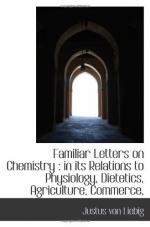Time and freedom of motion for the particles of bodies are necessary to the formation of crystals. If we force a fluid or a gas to become suddenly solid, leaving no time for its particles to arrange themselves, and cohere in that direction in which the cohesive attraction is strongest, no crystals will be formed, but the resulting solid will have a different colour, a different degree of hardness and cohesion, and will refract light differently; in one word, will be amorphous. Thus we have cinnabar as a red and a jet-black substance; sulphur a fixed and brittle body, and soft, semitransparent, and ductile; glass as a milk-white opaque substance, so hard that it strikes fire with steel, and in its ordinary and well-known state. These dissimilar states and properties of the same body are occasioned in one case by a regular, in the other by an irregular, arrangement of its atoms; one is crystalline, the other amorphous.
Applying these facts to natural productions, we have reason to believe that clay-slate, and many kinds of greywacke, are amorphous feldspar, as transition limestone is amorphous marble, basalt and lava mixtures of amorphous zeolite and augite. Anything that influences the cohesion, must also in a certain degree alter the properties of bodies. Carbonate of lime, if crystallised at ordinary temperatures, possesses the crystalline form, hardness, and refracting power of common spar; if crystallised at a higher temperature, it has the form and properties of arragonite.
Finally, Isomorphism, or the equality of form of many chemical compounds having a different composition, tends to prove that matter consists of atoms the mere arrangement of which produces all the properties of bodies. But when we find that a different arrangement of the same elements gives rise to various physical and chemical properties, and a similar arrangement of different elements produces properties very much the same, may we not inquire whether some of those bodies which we regard as elements may not be merely modifications of the same substance?—whether they are not the same matter in a different state of arrangement? We know in fact the existence of iron in two states, so dissimilar, that in the one, it is to the electric chain like platinum, and in the other it is like zinc; so that powerful galvanic machines have been constructed of this one metal.
Among the elements are several instances of remarkable similarity of properties. Thus there is a strong resemblance between platinum and iridium; bromine and iodine; iron, manganese, and magnesium; cobalt and nickel; phosphorus and arsenic; but this resemblance consists mainly in their forming isomorphous compounds in which these elements exist in the same relative proportion. These compounds are similar, because the atoms of which they are composed are arranged in the same manner. The converse of this is also true: nitrate of strontia becomes quite dissimilar to its common state if a certain proportion of water is taken into its composition.




